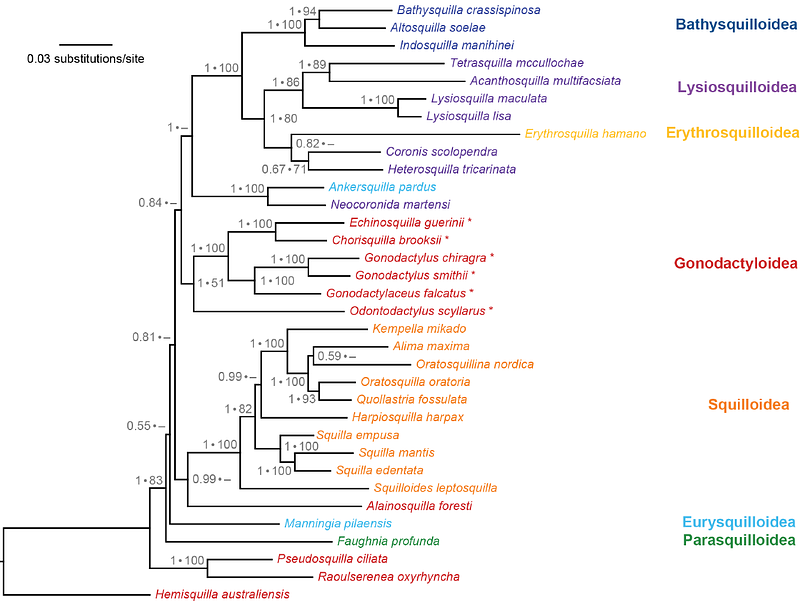Total-evidence phylogenetic analysis resolves the evolutionary timescale of mantis shrimps (Stomatopoda) and provides insights into their molecular and morphological evolutionary rates

Total-evidence phylogenetic analysis resolves the evolutionary timescale of mantis shrimps (Stomatopoda) and provides insights into their molecular and morphological evolutionary rates
Van Der Wal, C.; Ahyong, S. T.; Lo, N.; Ho, S. Y. W.
AbstractThe crustacean order Stomatopoda comprises approximately 500 species of mantis shrimps. These marine predators, common in tropical and subtropical waters, possess sophisticated visual systems and specialized hunting appendages. In this study, we infer the evolutionary relationships within Stomatopoda using a combined data set of 77 morphological characters, complete mitochondrial genomes, and three nuclear markers. Our data set includes representatives from all seven stomatopod superfamilies, including the first sequence data from Erythrosquilloidea. Using a Bayesian relaxed molecular clock with fossil-based calibration priors, we estimate that crown-group unipeltatan stomatopods appeared ~140 (95% credible interval 201-102) million years ago in the late Mesozoic. Additionally, our results support the hypothesis that specialized smashing and spearing appendages appeared early in the evolutionary history of Unipeltata. We found no evidence of a correlation between rates of morphological and molecular evolution across the phylogeny, but identified very high levels of among-lineage rate variation in the morphological characters. Our total-evidence analysis recovered evolutionary signals from both molecular and morphological data sets, demonstrating the merit in combining these sources of information for phylogenetic inference and evolutionary analysis.